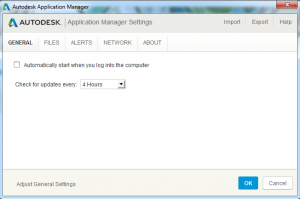Everyone else is discussing all the cool new features in AutoCAD 2010, so I decided to have a look at what’s new in the EULA (End User License Agreement). I compared the AutoCAD 2010 EULA for US/Canada to the AutoCAD 2009 EULA. I won’t divulge the process I used to automate the comparison, because the odds are pretty good that I violated the EULA somewhere along the way, and I want plausible deniability.
The first change I noticed is that the AutoCAD 2010 EULA contains more shouting. The 2009 EULA started out in a fairly mellow mixed case with a few shouts thrown in for effect, but the 2010 EULA dispenses with the lower case and launches right into a multi-paragraph avalanche of screaming block letters. Apparently nobody was listening, so they turned up the volume.
Substantively, there are a number of very interesting changes. The following was added to the preamble:
SOFTWARE OBTAINED FROM THIRD PARTIES THAT HAVE NOT BEEN AUTHORIZED OR ALLOWED BY AUTODESK, DIRECTLY OR INDIRECTLY, TO SUPPLY SOFTWARE IS LIKELY TO HAVE BEEN MADE AVAILABLE IN VIOLATION OF AUTODESK’S RIGHTS. IN SUCH AN EVENT, AUTODESK IS NOT OBLIGATED TO ISSUE AN ACTIVATION CODE OR OTHERWISE PERMIT YOU TO INSTALL OR USE THE SOFTWARE.
Next time you’re eyeing that used copy of AutoCAD 2010 on eBay, be warned that Autodesk is not obligated to permit you to install or use the software. They don’t come right out and say that they won’t allow it, so maybe they won’t mind — but then what’s the point of including this clause? Tim Vernor won’t be very happy about this change.
Moving along, I see that they added a definition for “Uninstall”, defining it as “to destroy or remove”. The definition of “User Documentation” was very slightly changed from “…after You acquire or Install the Software…” to “…when or after You acquire or Install the Software…”. Incidentally, did you know that Autodesk considers an AutoCAD reseller’s invoice to be “user documentation”?
Rounding out changes in definitions is a change in the definition of “You”. Yes, Autodesk has redefined “You” whether “you” like it or not.
I could go on and on about small wording changes, and while it would be interesting to contemplate why each change was made (and how many scheming lawyers it took to do it), we’d risk missing the forest for the trees.
Section 2.1, “License Grant”, contains ominous new language. The following has been added:
You may Access the application programming interfaces that may be included with or in the Software or otherwise available from Autodesk for use with the Software (“API’s”) to develop programs, modules, components or functionality that (i) are compatible with and are used and/or interfaced with the Software and (ii) contribute significant value-added functionality or enhancements to the Software (“API Modules”) provided You may Install and Access such API Modules solely on Computers where a licensed copy of the Software is also installed and further provided such Installation and Access is solely in connection with Your Installation and Access of the Software and solely for Your internal business needs. You may not redistribute all or any portion of an API Module.
Read that again. That’s right, you may not write any “programs, modules, components, or functionality” unless they “contribute significant value-added functionality or enhancements” to AutoCAD. Furthermore, if you do manage to write a program that adds significant functionality, you may not redistribute all or any part of it. What are those guys smoking out there in California?
Finally at the end of section 2.1, they changed “No license is granted under the terms of this Agreement if You did not lawfully acquire the Software” to “No license is granted under the terms of this Agreement if You did not lawfully acquire the Software from Autodesk or from a third party who has been permitted or authorized by Autodesk either directly or indirectly to supply the Software”. Take that Tim Vernor!
In another nod to the Vernor case, section 2.3, “Upgrades”, adds a new requirement to “destroy all Autodesk Materials relating to the Previous Version or, upon request by Autodesk, return all such Autodesk Materials relating to the Previous Version to Autodesk or the company from which they were acquired”. This is important language that could persuade a court to view an AutoCAD purchase as a license instead of a sale, thereby giving Autodesk the power to control the secondary market.
Interestingly, section 2.4, “Crossgrades”, requires that the previous software be uninstalled within 60 days, but has no requirement that it be destroyed. However, new language in section 2.7, “Termination”, which requires the software to be destroyed “upon termination of the license grant or this Agreement”, apparently covers both cases.
A funny change in section 3.2.3, “Transfers”, appears to close a loophole. The AutoCAD 2009 EULA disallowed transfers to “any other person”; the AutoCAD 2010 EULA disallows transfers to “any other person or legal entity”. Considering a license transfer? Make sure it’s to an illegal entity!
Section 4, “ALL RIGHTS RESERVED”, was rewritten. The rewrite introduced a grammatical error (“and You have not other rights”), but otherwise I don’t see that much changed. It still ends with the now familiar directive that “The Software and User Documentation are licensed, not sold.”
Finally, the infamous “audit clause” has been revised. Not the way you may have hoped, I’m sad to report. Luckily the change was a minor one that doesn’t make the clause any more overbearing than it already was.
Isn’t change wonderful?

